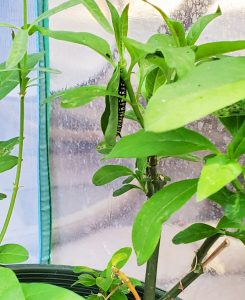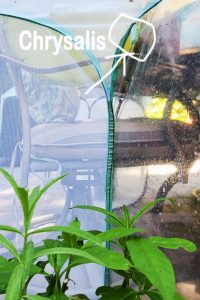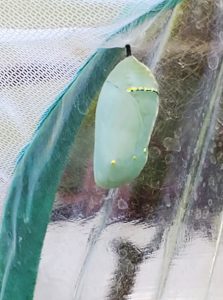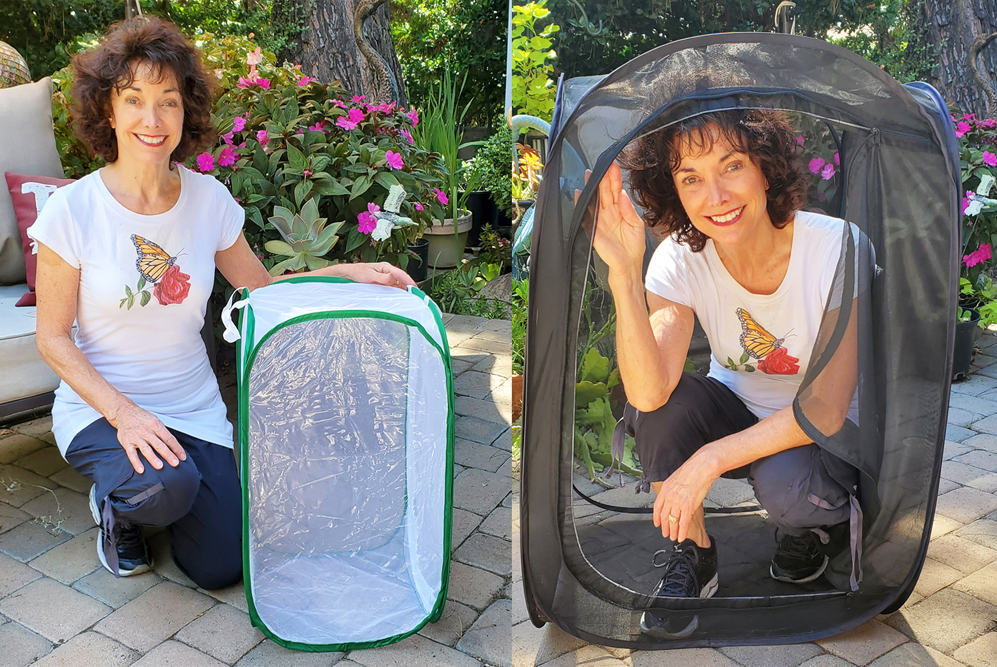
30 Jul Habitats Protect Monarch Caterpillars from all Predators
The best way to protect your monarch caterpillars is to raise them in netted butterfly habitats! Why is that necessary? I’ll tell you my experience. . . 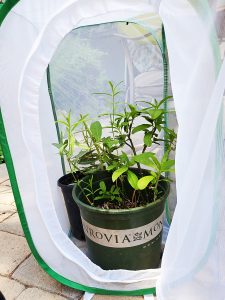
Starting in 2015, I experienced the tachinid fly predator in my monarch butterfly garden. They showed up about mid to late June and laid their eggs in the caterpillars and chrysalids, which kills them and produces more maggots as well. About 80% of my caterpillars and chrysalids were killed that year, and it was horrifying and heartbreaking. I knew nothing about tachinid fly predation before that and had had great seasons raising monarchs, but with the arrival of the tachinids, no more!
FYI – when a tachinid fly lays its eggs in a caterpillar or a chrysalid, you will see a white string hanging from them (see my posts on Predators for pictures). The string is for the mature maggots to crawl down and create MORE flies. So, once I learned that this was the telltale sign, I now grab the dead caterpillar or dead chrysalis with toilet paper and flush it down the toilet before the maggots can mature. 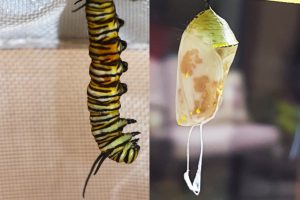
So, I purchased habitats starting in 2016 and now raise all my monarch caterpillars in habitats from mid-June through September. I have found that the tachinid flies aren’t present in April thru early June nor in October, yet I do choose to use the habitats to protect my caterpillars from other predators as well like wasps, praying mantises and lizards.
Over the years, my favorite habitats are those large enough to put a full one to three gallon milkweed plant inside with the caterpillars on it. I do have small 12x12x12 cylindrical habitats, but I can’t fit a pot inside and that requires me to continuously add fresh milkweed leaves several times a day. The habitats that fit t
he full plant make it so much easier and assures my caterpillars never go hungry, as long as I keep an eye on whether a plant is being stripped of leaves by hungry caterpillars. If so, I put a new leafy milkweed inside. One of my habitats is large enough to put 3 one-gallon plants inside, or a large potted milkweed, etc. It is a heartwarming way to raise monarch caterpillars! AND, when they are ready to make their chrysalis, they will climb up to the top of the habitat, attach with silk threads, and make their chrysalis. Then 12-14 days later, I get to observe newborn (newly eclosed) monarchs and release them. It is a WOW experience! And never gets old!
I am so committed to raising monarchs in habitats that I acquired habitats from a supplier and now have them available in my website shop at https://tinyurl.com/MonarchProducts
Here are MY two favorites:
TIP 1: Place fresh paper towels in the bottom every day so you can clean out any frass (caterpillar poop) that falls on the bottom. This helps maintain the health of the caterpillars.
TIP 2: After raising a batch of caterpillars in the habitat, soak it for one hour in a solution of 10% bleach and 90% water to kill any bacteria or virus or O.e. in the habitat. Monarch caterpillars have many possible disease issues, so especially if a caterpillar in your habitat dies, it must be disinfected. Read more under my blogs about Bleaching and Predators.
12″ x 12″ x 24″ It folds up tightly for easy storage. It has one panel that is clear plastic for viewing; and a large zippered side to easily put a one-gallon milkweed plant and caterpillars inside.
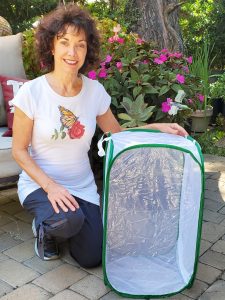


23″ x 23″ x 36″ It holds 3 to 4 one-gallon milkweed plants, or 3-gallon plus a couple 2 gallons, or a large milkweed in a pot. Great way to raise many caterpillars at one time.
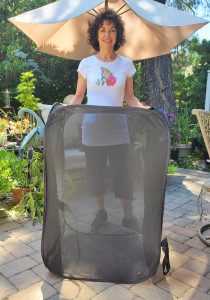

SO much fun to see them climb to the top and make their chrysalids!
